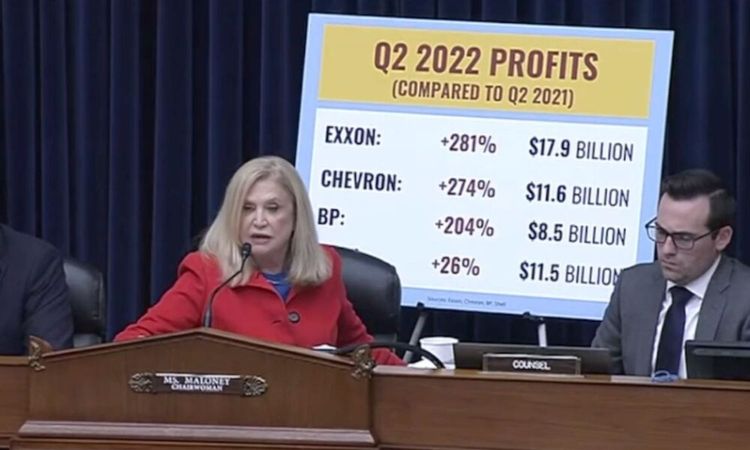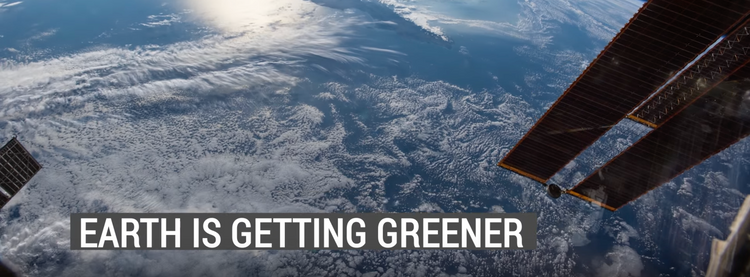Drilled Down: Blood of the Devil

By Karen Savage
Tens of thousands of Ecuadorians have been locked in legal battle with the oil major Chevron for decades. In recent years media attention has been focused on the lawyers in this case, but to understand what’s at stake we need to go back and look at what actually happened in Ecuador as the original defendant in this case, Texaco, began to explore for oil there.
Texaco began its search for Ecuadorian oil in March 1964, when the junta, the military government that had seized power the previous year, granted the firm a concession agreement. The initial agreement gave TexPet, Texaco’s Latin American subsidiary, the right to explore for oil in the Oriente region (in the eastern side of the country, covered primarily by rainforest).
Three years later, in the northern region of the concession that was home to the Indigenous A’i, or Cofán people, Texaco found what it was looking for deep under the rainforest: a vast, untapped reservoir of crude. Texaco and the government expanded their concession agreement, making a subsidiary named TexPet the “consortium operator” in charge of exploration and development of new oil fields.
TexPet’s operations in the A’i ancestral lands eventually expanded to include 15 fields, 18 production facilities, and 316 wells, as well as hundreds of miles of pipelines connecting them.
Texaco’s discovery made bold national headlines and mesmerized government officials, who anticipated that the black gold would line Ecuador’s coffers…and possibly their own pockets.
But the inhabitants of the region knew better, because by the late 1960s, Texaco and its frenzied search for oil, or sangre del diablo, “blood of the devil,” as locals came to call it, had already taken a devastating toll on Indigenous tribes including the Cofán, Secoya, Siona, Huarani, Sansahuari, Kichwa, Rumipamba, and Tetete.

As Texaco’s oil operations advanced, they displaced Indigenous tribes to make way for drilling operations, while interactions with workers disrupted and even shattered Indigenous communities.
The oil operations introduced a host of new harms to the Indigenous communities. Flaring and open burning of oil led to respiratory and other illnesses. Wastewater and other drilling and processing byproducts dumped into rivers, streams, and unlined pits poisoned drinking water sources, and killed off fish the tribal communities had long depended on. Strong and healthy adults and children became weakened and sick from ingesting contaminated food and water.
There was a cultural clash too, between Indigenous communities that lived as part of the natural system and Westerners who viewed nature as something to own and exploit. Oil workers would routinely ridicule tribal members for wearing traditional clothing, ply them with alcohol, and intentionally exacerbate existing conflicts to divide and weaken once-cohesive communities. The sexual harassment and rape of Indigenous women and girls by Texaco’s oilmen is well documented; it was horrific and widespread.
Indigenous people and campesinos (non-Indigenous Ecuadorians who lived in the countryside) would later recount widespread ethnic discrimination and racism at the hands of Texaco’s gringo workers.
“They don’t understand that we too are human beings and deserve to live with dignity,” says Donald Moncayo, a 47-year-old campesino who was born just 200 meters from the second well Texaco drilled in 1967.
Sour Lake
Texaco first struck black gold in the “sundown town” of Sour Lake, Texas, a town with a racist legacy. In 1903 the white people of Sour Lake terrorized Black workers in the oil patch, posting notices around town with a stark warning; “Notice—[n-word expletive], don’t let the sun go down on you in Sour Lake to-night.”
In the 1930s, Texaco chief executive Torkild Rieber violated U.S. law to supply Francisco Franco with enough deeply discounted fuel, on credit, to overthrow the Spanish government in a bloody civil war.
Under Rieber, a Nazi sympathizer, Texaco would go on to supply fuel with the Hitler and Mussolini regimes as well. The German secret service later called Rieber, a “absolutely pro-German” and “a sincere admirer of the Fuhrer.” It wasn’t until 1940, when the media caught on, that Rieber’s sentiments began to threaten the firm’s bottom line and the board forced Rieber to resign.
In 1994, a year after Ecuadorian plaintiffs filed suit against Texaco for its behavior in that country, Bari-Ellen Roberts, an African American employed as a senior financial analyst, filed a class action suit against Texaco after she was passed over for a promotion and then asked to train the white man who was given the position.
One Texaco manager referred to Roberts, a previous vice president at Chase Manhattan, as a “little colored girl.” Several Black employees from across the company signed affidavits stating they were purposefully overlooked for promotion and called names like Aunt Jemima, orangutans and porch monkeys by other Texaco employees.
“Texaco is corporate Calcutta, organized along racial caste lines as rigid and implacable as those of traditional Hindu society,” Roberts would later write.
The company could have settled earlier than it eventually did, but balked. Texaco would never “throw money at a bunch of Blacks! You all can forget that,” a company lawyer said defiantly, and as it turned out, prematurely.
As the case made its way through the New York court system, recordings surfaced in 1996 of Texaco officials talking about plans to shred evidence in the case. The executives could also be heard referring to Black employees as “niggers” and “Black jelly beans.”
Oil companies facing pollution allegations often hire outside experts, who purportedly find the companies haven’t contaminated the environment or sickened communities.
In this case, Texaco’s outside expert determined that the whole episode was a misunderstanding, concluding that one of the executives did use an n-word, but the word was Nicholas, as in St. Nicholas, not the n-word.

Utterly unconvinced, the Rev. Jesse Jackson and other civil rights leaders organized a nation-wide boycott. Texaco stock plummeted. Its bottom line again threatened, within days Texaco had settled the suit for $176 million. At the time it was the largest employment discrimination settlement ever reached.
“Throwing dynamite out of planes”
Far from the prying eyes of reporters and tree-hugging environmentalists, Texaco operated with impunity in Ecuador’s Oriente region, deep in the Amazon rainforest and a ten-hour bus ride from Ecuador’s capital of Quito.
The Indigenous tribes call the region Kanungukhu. But in a nod to the East Texas town where the company incorporated in 1903, Texaco named the company town that sprung up around its operations Lago Agrio, Spanish for Sour Lake.The company frequently re-named other areas after the oil subcontractors operating in the region.
“They brought names [Indigenous Amazonians] hadn’t heard before: Lago Agrio, Orienco, Parker, Herbert, and the like,” wrote Luis Yanza, president of the Frente de Defensa de la Amazonia, an NGO that has worked with the campesinos and Indigenous plaintiffs, in the book Los Voces de las Victimas. “Then they gave them food that they had not tried in their life either; clothes and utensils that did not know what they were for.”
The discovery of oil drew colonists from Quito and settlers from the countries’ other regions to the area surrounding Lago Agrio, hoping to escape poverty and crop-destroying droughts.
The new arrivals grabbed land wherever they could, sometimes near well sites or waste pits, and often on ancestral land of the Cofán, Huaorani, Siona, Secoya, and/or Kichwa people.
As the oil industry grew, in the 1970s and 80s, the pristine Kanungukhu rainforest, once home to more parrots, macaws, and other tropical birds than people, became a booming oil town with tens of thousands of residents.
The alcohol supplied by Texaco’s workers became an easily available replacement for a traditional plant-based drink called chicha, which takes several days to prepare. The oil workers’ abuse and rape of Indigenous women and girls often led to tensions that ended in violence between Indigenous groups and workers.
The Indigenous peoples viewed the encroaching army of oil workers as invaders. As they began to defend their communities and ancestral lands, Texaco and its workers came to view them as warlike savages to be tamed. Rosemary Kingsland, a Christian journalist writing about missionaries and oil men in the Amazon at the time wrote about what happened as Texaco moved northward, attempting to expand its operations.
“The northern strike was enormous . . . . Nothing would stop them from going in now and there was talk of using guns, bombs, flamethrowers. Most of the talk was wild, but the result would be the same: a war between the oil men and the Aucas [Huaorani]; a handful of naked savages standing squarely in the middle of fields of black gold, blocking the progress of the machine age. If it was to be a question of no oil or no Aucas, there was only one answer.”
“This is how they were considered, not only by the men who arrived with machinery and noises thirsty for black gold, but also by those who arrived in their territories much earlier, with the cross and the Gospel,” Yanza wrote.
Texaco has said that race played no factor in its operations, or in its relations with Indigenous communities.
An Alliance with Missionaries
To get the tribes out of its way, Texaco teamed up with Evangelical Christian missionaries, who sought to transform the semi-nomadic peoples into settlement dwellers as part of their conversion to Christianity.
Ewenguime Enkeri, a leader of the Waorani people (sometimes referred to as Huaorani or Waodani), described collusion between missionaries and oil companies in a speech reprinted in a 2013 publication of the International Work Group for Indigenous Affairs.
“Surely the missionaries had contact with the oil companies. [Corporación Estatal Petrolera Ecuatoriana or CEPE] the Ecuadorian state oil corporation, doing business along with Texaco. Piling us up there in order to exterminate the Waorani, to kill the Waorani,” Enkeri said. “They do this so that this land will be free, free for the oil companies and others, like the mining companies that want to do damage.”
The missionaries also introduced new diseases to the Indigenous communities, including polio, and separated families. Some, including members of his family, tried to return to their birthplaces and defend their territory, Enkeri recalled, “[B]ut they could not defend it any longer because the majority had died and because while they were caged in one place, the CEPE and Texaco had taken advantage of their land for colonization.”
Law and policy professor Judith Kimerling, whose 1991 book Amazon Crude helped prompt the Indigenous communities’ eventual litigation against Texaco, was one of the first outside observers to document Texaco’s impacts on Indigenous communities in Ecuador.
Missionaries would fly in Texaco’s planes over the rainforest searching for Huaorani, she says, sometimes throwing dynamite out of the planes to scare them. “Texaco just wanted them out of areas where they wanted to operate,” she said, “and, the government of Ecuador wanted Texaco to be able to find more oil and extract more oil.”
To this day, the rainforests’ Indigenous tribes continue the fight to retain their land, says Kimerling. “They’re trying to protect what remains so that they can survive,” resisting oil exploration amid a wave of new companies that encroach further and further into the region.
A “Fourth World” Country
In Ecuador, Texaco was part of a consortium that included Corporación Estatal Petrolera Ecuatoriana (CEPE), which would later become PetroEcuador, Ecuador’s state-run oil company.
Texaco took primary responsibility for drilling operations, as well as training of an influx of mostly unskilled Ecuadorians to work them.
Kimerling explained the arrangement in an 2006 article in the New York University Journal of International Law and Politics:
“When Texaco began its operations, there was little public awareness or political interest in environmental issues. Moreover, environmental protection in the oil patch depends on the use of technology, and Ecuador relied on Texaco—as the operator in the oil fields—to transfer petroleum technology and train national technicians. This reliance on Texaco’s expertise and access to technology continued even after Petroecuador became the majority shareholder in the consortium led by Texaco, in 1977. In the environmental law vacuum, Texaco set its own environmental standards and policed itself. As Petroecuador’s “professor,” Texaco also set the standard for that company’s operations. Government regulators in the hydrocarbon sector—who had to learn on the job—also received their basic education in the “school” of Texaco. But Texaco’s standards and practices did not include environmental protection or monitoring. Ecuadorian oil fieldworkers who were trained by Texaco were so unaware of the hazards of crude oil during the 1970s and 1980s that they applied it to their heads to prevent balding, and gave it to elderly parents who suffered from arthritis. Those rumors, attributing medicinal qualities to Amazon crude, were not surprising given the status of petroleum at the time as the harbinger of a great future for the nation, and Texaco’s neglect of environmental protection,”
Kimerling has described the Amazon and its residents as a “fourth-world country,” colonized initially by Spain in the 18th century, then by the Ecuadorian government when the country was founded in 1882, and by Texaco in the 1960s.
Indigenous Amazonians were afforded few rights and even fewer protections under Ecuadorian law at the time, making them ideal candidates for the most hazardous jobs Texaco had to offer. Locals were given little training and almost no protective equipment.
Still, for the most part, Texaco simply ignored the Indigenous and campesino residents, operating as though they were invisible or didn’t exist.
Finding oil was relatively easy for Texaco. Moving it over a rugged and earthquake-prone stretch of the Andes Mountains to the coast for market was not. To solve that problem, Texaco contracted in 1970 with an Oklahoma-based oil patch infrastructure firm called Williams Brothers to build the roughly 310-mile-long TransEcuadorian pipeline.
Oil began to flow through the TransEcuadorian to the Pacific for export in 1972. How much oil spilled along the way is impossible to know, but between 1972 and 2001, according to historian Patricia Widener, the Ecuadorian advocacy group Accion Ecologica documented 47 pipeline leaks that spilled an estimated 19 million barrels of oil into lush rainforest. For context, the 2010 BP Deepwater Horizon spill, widely considered one of the greatest ecological disasters in oil industry history, pumped an estimated 4 million barrels of oil into the Gulf of Mexico.
Texaco’s policy was to never speak—or even retain records, in many cases—of the alleged millions of gallons of crude oil that its operations discharged into the once pristine rainforest.
Even U.S. diplomats at the time were aware of the chronic spills from the TransEcuadorean pipeline. In 1976 correspondence to the State Department, U.S. ambassador to Ecuador Richard Bloomfield reported, “TransEcuadorean (sic) pipeline was broken once again by land-slides morning of July 29. Pipeline had only been in service thirty hours since previous break. Texaco-Gulf estimates this break will require at least several days to repair.”
Major Ecuadorian news outlets carried editorials at the time, Bloomfield wrote, asking why the vulnerable pipeline leaked so often.
But the damage was more than just a series of accidental spills and leaks.





